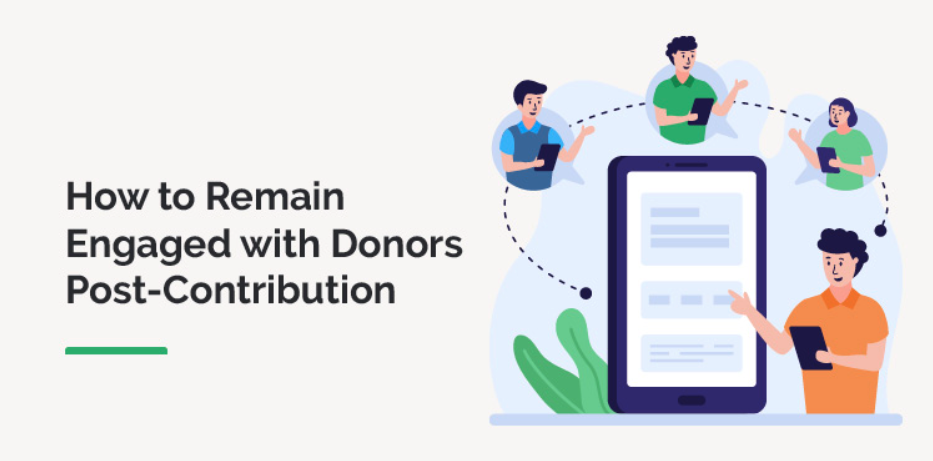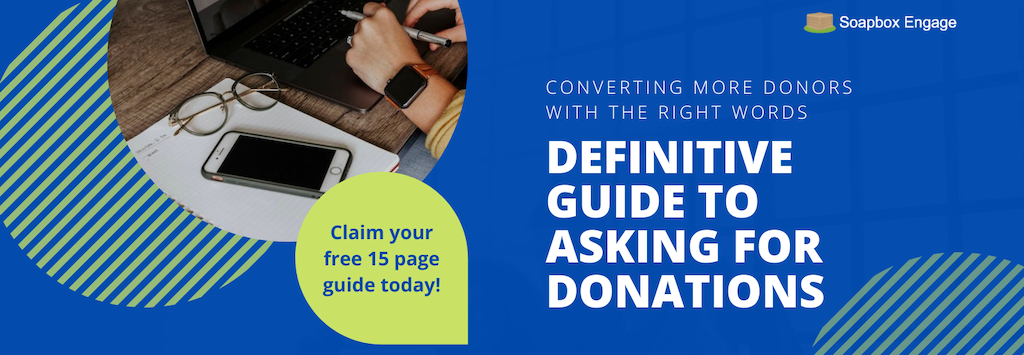
Picture this: You send a beautifully-crafted donation appeal to a prospective supporter who has previously shown interest in your cause. Upon reading the ask, they decide to take action and give to your organization. They navigate to your online donation form (or mail in a check, send a mobile gift, etc.) and provide the required information to submit and process their contribution. They close their browser, return to scrolling through social media, and—now what?
Will they continue giving to your nonprofit and its mission? Or is this the end of the road for that individual? It shouldn’t be; because the optimal donor journey doesn’t stop there.
In this guide, we’ll walk through several impactful ways to remain engaged with donors after their first (or tenth or even hundredth) gift:
Table of Contents
- Say thank you.
- Provide information about matching gifts.
- Promote other ways to keep in touch.
- Communicate organizational and donation impact.
- Encourage other ways to get involved.
Establishing long-term, intentional relationships is essential for keeping donors coming back, and a substantial portion of that relationship-building occurs after a supporter completes their donation.
Let’s dive in with these key practices for remaining engaged long after the “submit donation” button is clicked.
1. Say thank you.
First things first, it’s essential that you take the time to thank each and every donor who supports your organization—regardless of the shape or size of their contribution. And you’ll want to do more than a generic, “To whom it may concern, thanks for the gift!” message, too.
At the very least, we recommend addressing the donor by name in all communications going forward (both gratitude-specific and otherwise). Plus, it’s a good idea to thank donors for their specific contributions. For example, “Dear John, thank you for your recent donation of $100 to our Giving Day campaign.” This acknowledges the donor’s name, donation amount, and where they directed their funding, making it clear that it wasn’t just another copy-and-pasted message.
2. Provide information about matching gifts.
A significant percentage of your organization’s donors may be eligible to request corporate matching donations on your behalf. This can help your team raise more funds more quickly without individuals being asked to reach back into their own pockets. And donors love playing a role in these programs; unfortunately, many don’t even know they’re eligible to participate.
In the first day after an individual’s gift, sending a corporate matching gift follow-up message can be particularly impactful, especially when it contains useful information for donors to determine whether they qualify and how to participate if so. In fact, studies have shown that matching gift reminder emails sent within 24 hours of a donation results in a 53% open rate. That’s 2-3 times higher than the average nonprofit email open rate and, all in all, can lead to significantly more matching gifts being requested.
3. Promote other ways to keep in touch.
Next, you’ll want to ensure you have the tools you need to keep donors engaged with your organization and its happenings long into the future. More than likely, you have their email address on file. However, there are other ways to get updates about your cause, and encouraging donors to opt into these methods can be a great way to maintain channels of communication.
These might include following your nonprofit on social media (Facebook, Instagram, Twitter, LinkedIn, etc.), subscribing to an email (or physical) newsletter, signing up for text updates, and more.
4. Communicate organizational and donation impact.
Donors want to know that their contributions are making a difference. When they feel that they are playing a key role in a cause that they care about, they’ll be more likely to continue supporting your organization in the long run.
Thus, it’s important to continuously communicate a donor's impact on your organization and its cause. A few of the best ways to do this include telling meaningful constituent stories (e.g., thanks to your support, students like Bob are able to receive the tools they need for educational success), sharing progress toward fundraising goals (we couldn’t have reached our $10,000 goal without you!), and translating donation dollars into tangible mission impact (your $100 gift allowed us to provide 10 students with much-needed school supplies).
5. Encourage other ways to get involved.
You’ll also want to provide additional ways for donors to get involved that don’t necessarily involve sending funds. This will remind your audience that you’re there for their support in all sorts of realms, and you’re not just looking for your dollars. These may include:
- Volunteering and volunteer grants — Your donors may be interested in volunteering with your cause to make an even larger impact. Plus, individuals may be eligible to request volunteer grants from their employers, too, similar to matching gifts.
- Participating in nonprofit advocacy — Spread awareness of your mission and encourage donors to get involved by participating in advocacy efforts. It can be as easy as signing (or sharing) a petition!
- Making an online store purchase — Perhaps your organization has an online store to drive additional funds to your cause. Be sure your donors are aware of the opportunity to support your organization in this way as well.
- Fundraising on behalf of your organization — Donors that care deeply about your cause may also be willing to fundraise on your behalf. By participating in peer-to-peer fundraising, supporters can collect donations from their friends and family, allowing your organization to reach new audiences and further build out those relationships.
- Attending nonprofit events — Are you planning an upcoming event for your organization? Perhaps a fundraiser—whether a run/walk/ride, charity auction, or gala? Personally invite your donors to attend! They can further support your mission and receive an engaging experience in return.
- Contributing in-kind donations — Not all donations have to be monetary! Consider encouraging donors to get involved by contributing goods or services as well.
The more options you promote, the more likely donors are to follow through. These opportunities will allow you to further develop your supporter relationships, often enabling individuals to get a hands-on or behind-the-scenes experience pertaining to your cause.
______________________________________
If you only engage with your donors when you’re asking for a gift, it’s easy for individuals to feel depersonalized and undervalued. On the other hand, continuously reaching out and providing new and unique ways to get further involved in the organization allows your team to build and develop connections with donors as crucial assets to the cause. Good luck!

